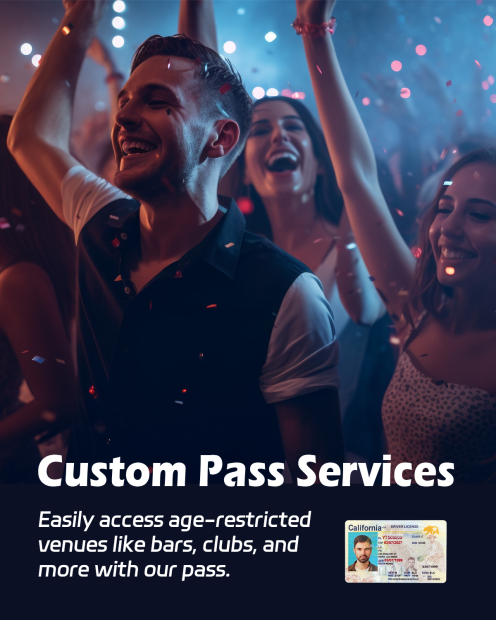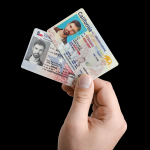The Real ID Act was established to enhance security measures for identification documents in the United States. A Real ID is a type of driver’s license or identification card that meets certain federal standards and is necessary for certain activities such as boarding domestic flights starting from a specific date and accessing certain federal facilities. This article will focus on the process of applying for a Real ID, especially for individuals with learning disabilities.
Understanding Real ID Requirements
Before starting the application process, it’s crucial to understand the general requirements for obtaining a Real ID. First and foremost, applicants need to provide proof of identity. This can include a valid U.S. passport, a certified birth certificate, or a permanent resident card. Additionally, proof of Social Security number is required, such as a Social Security card or a W – 2 form with the full Social Security number. Proof of two different residential addresses is also necessary, which can be established through utility bills, bank statements, or lease agreements.

For individuals with learning disabilities, these requirements can seem overwhelming at first glance. However, with proper guidance and support, it is entirely possible to gather the necessary documents. Some people with learning disabilities may have difficulty understanding the exact nature of the required documents or where to obtain them. In such cases, it can be helpful to reach out to a support person, such as a family member, a caregiver, or a disability advocate, who can assist in clarifying the requirements and guiding the individual through the process.
Pre – application Preparation for Individuals with Learning Disabilities
Once the requirements are understood, the next step is pre – application preparation. This can be a challenging stage for those with learning disabilities. For example, reading and filling out forms can be a daunting task. Many states offer accessible application forms, which may include larger print, simplified language, or even audio – visual versions. It’s important to check with the local Department of Motor Vehicles (DMV) or the relevant identification – issuing agency to see what accessible options are available.

Another aspect of pre – application preparation is gathering the required documents. As mentioned earlier, proof of identity, Social Security number, and residential addresses are needed. For individuals with learning disabilities, it can be helpful to create a checklist of the required documents. This checklist can be in a visual format, such as a list with pictures of the documents next to their names, to make it easier to understand and follow. Organizing the documents in a file folder or a labeled container can also help keep everything in order.
It may also be beneficial for individuals with learning disabilities to practice the application process in advance. This can involve role – playing with a support person, where they simulate the interaction with the DMV staff. This practice can help reduce anxiety and make the actual application process smoother.
The Application Process at the DMV
When it comes time to visit the DMV to apply for a Real ID, individuals with learning disabilities may face some unique challenges. The DMV environment can be noisy and overwhelming, with a lot of people and a complex process to navigate. It is advisable to make an appointment in advance if possible. This can help reduce waiting times and make the experience less stressful.
Upon arrival at the DMV, the applicant will need to present their documents to the staff. The staff will verify the documents and may ask some questions. For individuals with learning disabilities, it may be helpful to bring a support person who can assist in answering questions or clarifying any misunderstandings. Some DMV offices also have staff trained to work with individuals with disabilities and can provide additional support during the application process.
The applicant will then need to complete any necessary forms and pay the application fee. Again, if the forms are difficult to understand, accessible versions should be requested. After the forms are completed and the fee is paid, the applicant will have their photo taken for the Real ID. It’s important to follow the DMV’s photo – taking guidelines, which may include requirements such as not wearing hats or glasses (unless for medical reasons).
Post – application Follow – up
After the application is submitted, there may be a waiting period before the Real ID is issued. The length of the waiting period can vary depending on the state and the volume of applications. During this time, it’s important to keep an eye on any communication from the DMV. This may include emails, letters, or phone calls regarding the status of the application.
For individuals with learning disabilities, it can be helpful to have a support person who can help monitor this communication. If there are any issues or additional requirements, the support person can assist in understanding and responding to them. Once the Real ID is issued, it will be sent to the address provided during the application process. It’s important to ensure that the address is correct and that someone will be available to receive the Real ID when it arrives.
Common Problems and Solutions for Applying for a Real ID with a Learning Disability
- Document Gathering Difficulties: Problem – Individuals with learning disabilities may have trouble understanding which documents are required and where to obtain them. Solution – Create a visual checklist with pictures of the documents. Seek help from a support person who can research and guide on where to get the necessary documents, such as contacting the vital records office for a birth certificate or the Social Security Administration for a Social Security card.
- Form – Filling Challenges: Problem – Reading and understanding the application forms can be a significant hurdle. Solution – Request accessible forms from the DMV, such as those in large print or with simplified language. Have a support person or a professional, like a special education teacher or a disability service provider, help fill out the forms. Practice filling out sample forms in advance.
- Anxiety in the DMV Environment: Problem – The busy and noisy DMV environment can cause anxiety, especially for those with learning disabilities. Solution – Make an appointment in advance to reduce waiting time. Bring a support person who can provide emotional support and help navigate the environment. Some DMV offices may have quiet areas or special accommodations for individuals with disabilities, so it’s worth asking about these options.
- Communication Issues with DMV Staff: Problem – Difficulty in understanding the questions from DMV staff or communicating one’s own needs. Solution – Bring a support person who can act as an interpreter if needed. Request that the DMV staff speak slowly and clearly. Some individuals may also benefit from using communication aids, such as a communication board or a tablet with pre – written messages.
- Post – application Monitoring: Problem – Forgetting to check for communication from the DMV or having trouble understanding the communication received. Solution – Have a support person responsible for monitoring emails, letters, and phone calls from the DMV. Set up reminders on a calendar or a mobile device to check for updates regularly. If the communication is difficult to understand, ask the DMV for clarification or have a support person help interpret it.
Fake ID Pricing
unit price: $109
| Order Quantity | Price Per Card |
|---|---|
| 2-3 | $89 |
| 4-9 | $69 |
| 10+ | $66 |


